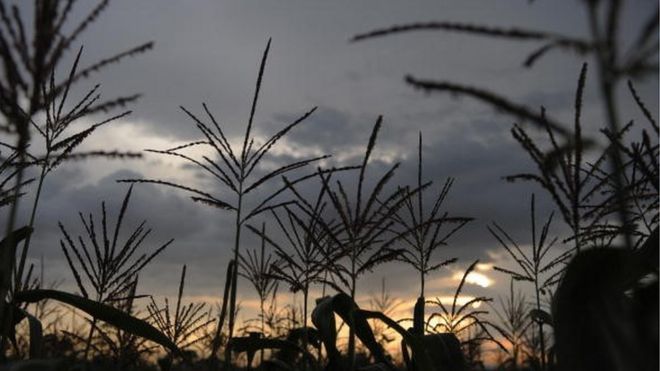A £30 million emergency aid package is being sent to Ethiopia as the country faces a drought on a similar scale to the 1980s natural disaster that killed more than a million people.
Some 18 million Ethiopians are suffering as the country is hit by food shortages as well as increased risk of disease, and an international appeal has been launched to raise £923 million.
Around £15 million of British funding will go to the United Nations World Food Programme to help nearly two million people, and £14 million will be spent on providing emergency water and healthcare along with protection for vulnerable girls and women.

Nick Hurd warned the drought is on a similar scale to the 1984 disaster
A further £1 million will be used to send humanitarian experts to help deal with the crisis. The package is being allocated from the Department for International Development's Ethiopia budget.
International development minister Nick Hurd warned the drought is on a similar scale to the 1984 disaster that shocked the world as millions died or were left destitute and prompted the creation of Live Aid to raise funds. The new crisis is expected to be less severe because more systems and money are in place to deal with the impact.
Mr Hurd said : "A relentless drought is pushing millions to the brink in Ethiopia. The scale of the drought is similar to the one that killed so many in 1984.
"This time the Ethiopian government is in a much stronger position to help their people. However, they need the help of the international community.
"New funding from Britain will ensure families get the emergency food that they so desperately need in order to survive.
"Working alongside the government of Ethiopia, the UN and others, we are also helping to prevent child malnutrition, treat disease outbreaks and keep children in schools during this emergency.
"But the scale of the current crisis means much more needs to be done. With millions in serious need of help, Ethiopia is facing a major humanitarian crisis and urgently needs the world to step up and provide lifesaving relief.
"A stable, more prosperous Africa is firmly in Britain's national interest and it is right that we do all that we can to prevent the crisis spiralling out of control."
The latest funding takes the total announced in the UK to deal with the crisis to £113 million since July.
Read more: http://www.dailymail.co.uk/wires/pa/article-3371982/UK-sending-new-30m-aid-package-help-Ethiopia-drought-crisis.html#ixzz3vEI2a6bX
Follow us: @MailOnline on Twitter | DailyMail on Facebook





 10.2 million people in need of humanitarian food assistance
10.2 million people in need of humanitarian food assistance









